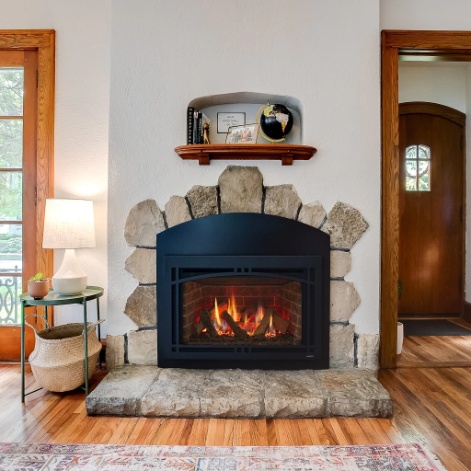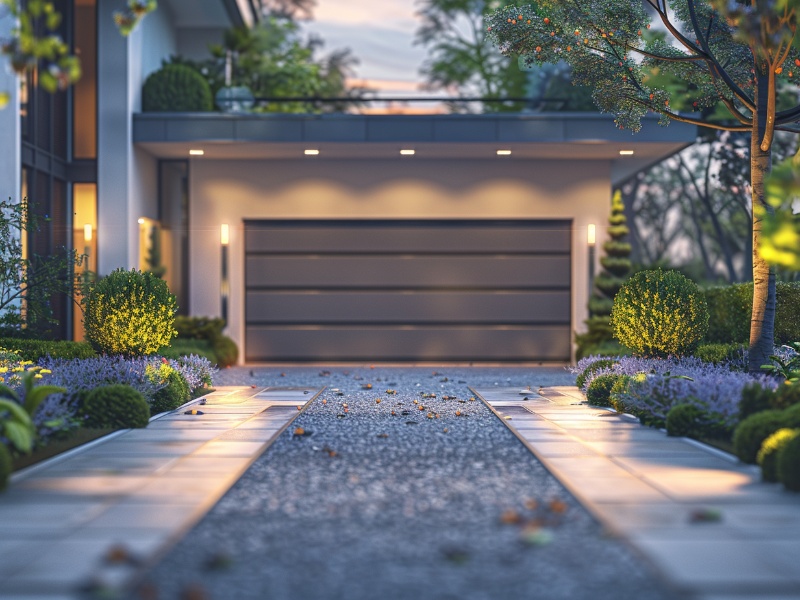Table of Contents
Have you ever found yourself nodding off in front of a cozy fireplace? In this article, we delve into the factors that can make us feel sleepy around fireplaces.
We explore the reasons behind this phenomenon and the effects fireplaces can have on our bodies, from the warmth and ambiance they provide to the potential risks associated with carbon monoxide exposure.
Discover how to prevent sleepiness and ensure the safe use of fireplaces in our homes.
Join us as we uncover the mysteries behind the allure of a crackling fire.
What Is A Fireplace?
A fireplace is a structure designed to contain a fire for heating and creating a cozy ambiance within a living space.
Throughout history, fireplaces have held a central role in homes, not just for the practical purpose of providing warmth, but also for the comforting atmosphere they bring. The evolution of fireplaces in modern architecture has seen a shift towards more efficient designs that not only heat the space effectively but also add a touch of elegance and style. From traditional brick hearths to contemporary gas fireplaces, the focal point of a room, the fireplace has adapted to meet the changing needs and aesthetics of homeowners, while still maintaining its original charm.
How Does A Fireplace Work?
Fireplaces work by utilizing different fuel sources such as natural gas or wood to generate heat and create a warm atmosphere in a room.
Gas fireplaces operate by igniting the gas through a burner and utilizing a heat exchanger to transfer the warmth into the room efficiently. On the other hand, wood-burning fireplaces rely on burning wood logs to produce heat, with the combustion process releasing heat energy and gases like carbon dioxide and water vapor.
Vents or chimneys play a crucial role in both types of fireplaces by directing smoke and gases outside the house, ensuring proper air circulation and maintaining indoor air quality.
Why Do People Use Fireplaces?
People use fireplaces for the soothing and comforting ambiance they provide, creating a relaxing environment conducive to unwinding and rest.
The flickering flames dancing gracefully in the hearth have a mesmerizing effect, captivating one’s attention while instilling a sense of tranquility. The warmth emanating from the fire envelops individuals in a cocoon of comfort, melting away the stresses of the day. As the crackling sound fills the room, it serves as a gentle lullaby, easing the mind into a state of relaxation.
The soft, ambient glow of the firelight casts a soft, welcoming glow, inviting individuals to sink into the plush cushions and let go of the day’s tensions.
Heat Source
Fireplaces serve as a primary heat source in homes, offering a cozy and comforting warmth that enhances the indoor environment.
The radiant heat generated by a fireplace not only helps in maintaining the ambient temperature but also creates a welcoming atmosphere.
The dancing flames and the crackling sound of burning wood evoke a sense of nostalgia and relaxation, making the living space feel more inviting.
This warmth not only provides physical comfort during cold winter days but also contributes to a sense of emotional well-being and tranquility, making it a cherished focal point in many households.
Ambiance
The ambiance created by fireplaces fosters a sense of relaxation and tranquility, providing a peaceful setting for unwinding and decompressing.
The soothing sounds of crackling firewood can have a mesmerizing effect on one’s state of mind, creating a serene atmosphere that eases stress and promotes mental well-being.
The gentle flickering of the flames and the warm glow of ambient lighting further enhance the overall sense of coziness and comfort in the room, inviting individuals to let go of their worries and embrace a moment of peace and tranquility.
This harmonious blend of sensory experiences can help create a sanctuary within one’s own living space, offering a retreat from the demands of everyday life.
Cooking
Some fireplaces are designed for cooking purposes, utilizing the heat generated for preparing meals and creating a cozy cooking environment.
This historical practice dates back centuries, with fireplaces serving as the focal point of traditional culinary practices in many cultures. Cooking over an open flame not only provides a unique flavor profile to dishes but also connects individuals to the essence of food preparation.
The process of fireplace cooking requires skill and patience, as controlling the temperature and positioning of the food is crucial for successful outcomes. It offers a sensory experience like no other, with the crackling sounds of the fire adding to the ambiance of the cooking process.
Cost Savings
Fireplaces can contribute to cost savings by providing an alternative heating source that reduces reliance on traditional heating systems.
This not only helps in reducing energy consumption but also leads to lower utility bills, especially during the colder months. By utilizing fireplaces more often, homeowners can significantly cut down their overall heating expenses over time. The cost efficiency of using fireplaces as a primary or supplemental heating solution lies in their ability to efficiently heat specific areas of a home, thus providing targeted warmth where needed most. Embracing fireplaces as part of one’s heating strategy can lead to substantial financial benefits in the long run.
What Causes Sleepiness Around Fireplaces?
The relaxation response induced by fireplaces, along with factors like carbon monoxide exposure, can contribute to feelings of sleepiness in individuals near fireplaces.
This drowsiness can be attributed to the soothing effects of the crackling flames and radiant heat, which create a tranquil ambiance promoting relaxation. Increased carbon monoxide levels near a fireplace can impair cognitive function and lead to fatigue.
The body’s circadian rhythms, which regulate sleep-wake cycles, may also be influenced by the warm environment, potentially disrupting the natural production of melatonin, the hormone that signals the body to prepare for sleep. These combined factors pose health risks and underscore the importance of proper ventilation and awareness when enjoying the cozy atmosphere near fireplaces.
Carbon Monoxide
Carbon monoxide emitted from fireplaces poses health risks such as poisoning and can be mitigated through proper ventilation and maintenance.
Exposure to carbon monoxide can result in symptoms like headaches, dizziness, and even death in severe cases, making it crucial to have adequate airflow to ensure a safe living environment.
Poorly ventilated areas can lead to a dangerous buildup of this colorless, odorless gas, emphasizing the importance of maintaining chimney flues and ensuring proper air circulation. Regular inspection and cleaning of fireplace vents and ducts are essential to prevent the release of harmful air pollutants that could compromise respiratory health and indoor air quality.
Oxygen Depletion
Fireplaces can lead to oxygen depletion in enclosed spaces, potentially causing exhaustion and fatigue due to decreased oxygen levels.
When oxygen levels drop near a fireplace, the body’s ability to function at its optimal level is compromised, leading to feelings of tiredness and drowsiness. These symptoms are often mistaken for mere laziness, when in fact they are clear signs of oxygen deprivation.
It is crucial to prioritize ventilation and airflow in areas near fireplaces to maintain adequate oxygen levels for overall well-being. Without proper oxygen intake, the body struggles to perform basic functions efficiently, resulting in decreased energy levels and diminished cognitive abilities.
Ensuring a well-ventilated space can combat these effects, promoting alertness and vitality.
Relaxation Response
The relaxation response triggered by fireplaces can induce feelings of drowsiness and a sedative effect, contributing to a relaxed state conducive to sleep.
This state of relaxation is not only beneficial for physical rest but also plays a crucial role in calming the mind, reducing stress, and preparing the body for a restful night’s sleep.
The ambient crackling sound of a fireplace and the gentle warmth it provides create a comforting environment that signals to the body it’s time to wind down and embrace sleep. This bedtime routine of unwinding by the fireplace can help establish a consistent sleep-inducing pattern, making it easier to fall asleep and improve overall sleep quality.
What Are The Other Effects Of Fireplaces On The Body?
In addition to creating warmth and ambiance, fireplaces can also lead to physical effects such as dryness, eye irritation, and allergies in some individuals.
Indoor fireplaces, while cozy and inviting, can contribute to a decrease in indoor air quality, potentially exacerbating respiratory issues like asthma. The particles and soot released from burning wood can linger in the air, leading to discomfort for those with sensitive skin or eyes.
Continued exposure to these indoor pollutants may also trigger allergic reactions in certain individuals, further impacting their overall wellness. It’s important to be mindful of these potential health implications and take steps to mitigate them, such as ensuring proper ventilation and regular cleaning of the fireplace and chimney.
Dryness
Fireplaces can contribute to dryness in the indoor environment, affecting air quality and potentially leading to discomfort for individuals sensitive to dry conditions.
The decrease in humidity levels caused by fireplaces can also have a significant impact on respiratory health, as dry air can exacerbate respiratory issues such as allergies, asthma, and sinus problems.
To address these dryness-related issues, it is advisable to use a humidifier in rooms with fireplaces to add moisture back into the air. Ensuring proper ventilation and keeping the fireplace well-maintained can help mitigate the effects of dryness on indoor air quality and overall comfort levels.
Eye Irritation
Fireplaces may cause eye irritation due to the release of air pollutants such as smoke particles, affecting individuals who are particularly sensitive to airborne irritants.
The interaction between these airborne irritants and the delicate eye tissue can lead to discomfort, itching, redness, and watering of the eyes. People with allergies or respiratory conditions like asthma may experience exacerbated symptoms when exposed to fireplace emissions.
To minimize eye irritation, it is advised to ensure proper ventilation while using the fireplace, regularly clean and maintain the chimney and fireplace, and consider investing in an air purifier to improve indoor air quality and reduce the presence of irritants.
Allergies
Individuals with allergies may experience exacerbated symptoms near fireplaces, as the release of particles and allergens can compromise respiratory health.
These allergens can trigger respiratory issues such as coughing, wheezing, and shortness of breath, making it crucial for allergy sufferers to manage indoor air quality effectively. Poor indoor air quality can lead to increased sensitivity to allergens present in the environment, further worsening allergy symptoms.
To minimize exposure to these allergens, it is essential to implement strategies like proper ventilation, regular cleaning of the fireplace and surrounding areas, and using HEPA filters in HVAC systems to reduce the overall allergen load in the indoor environment.
How To Prevent Sleepiness Around Fireplaces?
To avoid feeling excessively sleepy near fireplaces, proper ventilation, regular maintenance, and limiting the time spent in close vicinity of the fireplace are recommended.
Adequate ventilation helps to disperse any harmful gases from the combustion process, reducing the risk of drowsiness caused by poor air quality.
Scheduled maintenance checks ensure that the fireplace is functioning efficiently and safely, preventing any potential hazards that could contribute to drowsiness.
Managing your time wisely by setting boundaries for how long you stay near the fireplace can help limit exposure to the warmth and comfort that may lead to feeling sleepy.
Proper Ventilation
Ensuring proper ventilation is crucial near fireplaces to prevent the buildup of carbon dioxide and maintain a healthy indoor environment.
Poor ventilation in fireplace areas can lead to the accumulation of harmful gases such as carbon monoxide. Harmful gasses pose a serious health risks to individuals. Exposure to high levels of carbon dioxide can result in symptoms like dizziness, headaches. It can also lead to more severe consequences like poisoning or suffocation. To combat these dangers, it is essential to implement effective ventilation systems that facilitate the exchange of indoor and outdoor air. This ensures a steady flow of fresh, clean air and minimizes the presence of pollutants.
Regular Maintenance
Regular maintenance of fireplaces is essential to ensure safe operation and adherence to safety guidelines. It also ensures the longevity of the heating element.
- Cleaning the chimney regularly is crucial to prevent the build-up of creosote. This substance is highly flammable and can lead to chimney fires.
- Checking and replacing the gaskets around the fireplace doors helps maintain a proper seal. This will prevent heat loss and ensure efficient operation.
- Inspecting the fireplace flue and damper for any obstructions or damages is necessary to maintain proper airflow. In addition, it reduces the risk of carbon monoxide buildup.
- Scheduling annual professional inspections and cleanings can identify any potential issues early on, ensuring a well-functioning and safe heating system.
Limit Time Spent Near Fireplace
Limiting the duration of exposure to fireplace heat can help prevent feelings of fatigue and exhaustion. These feelings are associated with prolonged proximity to the fire.
Setting time limits for fireplace usage is crucial to avoid overheating and dehydration. Signs of heat-related fatigue indicate the need for a break. Examples of these signs are sweating excessively, feeling dizzy, or having a rapid pulse,
Taking regular breaks to cool down and rehydrate can help maintain energy levels and prevent burnout. Relaxation techniques like deep breathing, stretching, or mindfulness can also aid in combating fatigue and promoting overall well-being.
Can Fireplaces Be Used Safely?
Utilizing fireplaces safely involves following prescribed safety guidelines and installing carbon monoxide detectors. In addition, it involves using appropriate fuel sources to minimize health risks.
Safety protocols are imperative when it comes to the operation of fireplaces. They not only provide warmth and ambiance but also present potential hazards if not handled with care. Carbon monoxide detectors play a crucial role in detecting this odorless gas that can be emitted during fuel combustion. The detectors alert residents to dangerous levels before they become a health threat.
Selecting suitable fuels, such as seasoned wood or natural gas, is essential for both safe and efficient operation. It helps to prevent potential accidents and reduce indoor air pollution. By adhering to these safety measures, households can enjoy their fireplaces responsibly while safeguarding their well-being.
Use Proper Fuel
Choosing the right fuel for fireplaces is essential to minimize risks associated with emissions like wood smoke. Fuel options include seasoned wood or natural gas.
The impact of fuel selection on fireplace emissions is crucial for indoor air quality and also for the environment. Clean-burning fuels, such as natural gas or approved pellets, can significantly reduce harmful pollutants released into the air.
On the other hand, using unseasoned wood or treated materials can lead to increased levels of particulate matter and toxins in the air. These pose health risks for individuals, especially those with respiratory conditions.
It’s important to consider not only the warmth and ambiance a fireplace provides. It is also important to consider its impact on air quality and overall well-being.
Install Carbon Monoxide Detector
Installing a carbon monoxide detector near fireplaces is a critical safety measure. They detect harmful gas levels and protect against potential health effects.
- Carbon monoxide is a colorless and odorless gas produced by the incomplete burning of fuels. These fuels include wood, coal, and gas. It can lead to symptoms like headaches, dizziness, nausea, and even death when exposed to high levels.
- Early detection through detectors near fireplaces can alert occupants to dangerous levels and prompt evacuation, averting serious health risks. Timely response and medical attention upon detection of carbon monoxide poisoning symptoms are crucial for preventing long-term health complications.
- Thus, having functional carbon monoxide detectors in fireplace areas is indispensable for maintaining a safe living environment.
Follow Safety Guidelines
Adhering to recommended safety guidelines for fireplaces not only ensures physical well-being. It also contributes to mental well-being by creating a secure and comfortable environment.
When individuals follow safety protocols for fireplaces, they are not only preventing potential accidents and hazards. They are also nurturing a sense of peace of mind. Knowing that one’s home is a safe setting where precautionary measures are in place can greatly reduce anxiety and stress levels.
The psychological benefits extend beyond the physical safety aspect. Feeling secure in one’s living space can promote emotional comfort and overall well-being. A safe indoor environment fosters a sense of sanctuary and tranquility, enhancing one’s quality of life.
Frequently Asked Questions
1. Why do fireplaces make you sleepy?
The warmth and ambiance created by fireplaces can induce relaxation and drowsiness. Factors like the soothing sound of crackling fire and the comfortable heat can encourage a relaxation response in the body. Other factors include the dim lighting. These factors combined can make you feel sleepy.
2. Are there any health risks associated with sitting too close to a fireplace?
Yes, being too close to a fireplace can pose health risks, including exposure to carbon monoxide and oxygen depletion. These risks highlight the importance of proper ventilation and adherence to safety guidelines when using fireplaces.
3. How can you ensure the safe use of fireplaces in your home?
To ensure safe fireplace use, follow safety guidelines such as using the correct fuel, and installing carbon monoxide detectors. In addition, other safety guidelines include ensuring proper ventilation, and conducting regular maintenance and inspections.
4. What are some of the benefits of having a fireplace?
Having a fireplace offers benefits like providing warmth, and enhancing the ambiance and aesthetics of a room. Also, it serves as a backup heat source, and potentially increases home value.
5. How does a fireplace work?
A fireplace works by first burning a fuel source, such as wood or gas, to generate heat. Then, the heat is radiated into the room. Finally, chimney or venting system expels combustion byproducts outside, maintaining indoor air quality.
6. Can the type of fuel you use in a fireplace affect your health?
Yes, the type of fuel used can impact indoor air quality and health. Using clean-burning fuels like natural gas can minimize harmful emissions. On the other hand, burning treated wood or improper materials can release toxins and particulate matter, affecting respiratory health.
Latest Articles

What Is An NG (Natural Gas) Indicator And Why You Need It For Your Fireplace
Table of Contents1 Understanding Natural Gas Fireplaces2 What is an NG Indicator?3 Importance of NG Indicators for Safety4 Types of NG Indicators5 Installation and Maintenance of NG Indicators6 Signs of a Faulty NG Indicator7 Frequently Asked Questions Natural gas fireplaces are a favored option among numerous homeowners due to their convenience and effectiveness. But, what is an NG (Natural Gas) indicator and why you need it for your fireplace? It is imperative to comprehend how they function and the significance of having an NG (Natural Gas) indicator for safety purposes. This article delves into the definition and significance of NG indicators. We will discuss the potential hazards associated with the absence of one and the various types of indicators accessible. Also, we will discuss installation and maintenance recommendations, and methods to recognize and rectify issues with malfunctioning indicators. Stay well-informed and ensure the safety of your home by referring to this exhaustive guide. Understanding Natural Gas Fireplaces Natural gas fireplaces serve as an efficient and convenient heating option for numerous households. They utilize natural gas as a fuel source to deliver consistent warmth and ambiance. How They Work and Why They Need NG Indicators The operation of natural gas fireplaces involves igniting natural gas to generate heat. This process requires diligent monitoring to ensure both safety and efficiency, a task facilitated by the use of NG indicators. NG indicators play a critical role in detecting potential gas leaks. They enable residents to promptly address and mitigate any associated hazards. Through continuous monitoring of gas levels and providing timely warnings and alerts, NG indicators uphold a secure indoor environment. It is imperative to ensure that these indicators function properly to facilitate the effective operation of natural gas fireplaces. This helps mitigate the inherent risks linked to gas leaks. What is an NG Indicator? An NG indicator is a specialized device equipped with advanced sensors and technology. It is specifically designed to detect natural gas leaks and monitor gas pressure in appliances, such as fireplaces. Definition and Purpose The NG indicator functions as a detector that monitors gas appliances for potential leaks. It provides essential functionality to ensure safety in households utilizing natural gas. These detectors play a crucial role in protecting residences by notifying occupants of dangerous gas leaks long before they escalate into perilous situations. Through continuous monitoring of gas levels in the vicinity, NG indicators offer an additional layer of protection. This is particularly important in properties that rely on gas-operated fireplaces or stoves. These devices not only help avert potential disasters but also enhance the overall peace of mind of homeowners. They assure them that their living spaces are equipped with reliable safety features. Importance of NG Indicators for Safety Natural gas indicators are essential for maintaining safety in households equipped with natural gas appliances. These devices serve as a proactive measure to promptly detect gas leaks. This offers homeowners a sense of security and assurance. Potential Dangers of Not Having an NG Indicator The absence of an NG indicator in residences equipped with natural gas appliances can pose significant hazards. This includes the risk of undetected gas leaks , carbon monoxide poisoning , and pilot outages that may lead to dangerous situations. These potential risks can profoundly impact indoor air quality. They directly influence the health and safety of individuals residing in the household. Undetected gas leaks can go unnoticed, gradually permeating the air and creating a potentially explosive environment. Insufficient ventilation from undetected exposure to carbon monoxide can lead to serious health complications. These range from mild symptoms such as dizziness to fatal poisoning. Without proper monitoring from an NG indicator, families are left susceptible to these concealed threats. This underscores the critical importance of implementing proactive measures to mitigate such risks. Types of NG Indicators Indicators for Natural Gas (NG) are available in diverse types. Each presents distinct detection capabilities tailored to specific requirements, encompassing both manual and automated alternatives. Manual vs. Automatic Indicators Manual NG indicators require user intervention for monitoring gas levels and identifying leaks. On the other hand, automatic indicators employ sophisticated technology to deliver continuous, real-time monitoring. This heightened efficiency and oversight enhance safety protocols. Conventional manual indicators rely on individuals to physically inspect and evaluate gas levels periodically. This renders them more susceptible to human errors. Conversely, automatic indicators feature sensors capable of promptly detecting even the most minute fluctuations in gas levels. This establishes a more dependable and precise monitoring mechanism. Automatic indicators can activate alerts and shut-off systems upon detecting a leak. This ensures immediate action to avert potential hazards. This advanced technology enhances safety protocols and instills a sense of command and assurance among users. Installation and Maintenance of NG Indicators The reliable and accurate performance of NG indicators necessitates proper installation and consistent maintenance. This often entails professional installation and adherence to recommended service guidelines. Proper Installation and Regular Maintenance Tips The proper installation of NG indicators involves adhering to the specifications in the user manual. Maintenance protocols entail strict adherence to a predetermined maintenance schedule to ensure sustained operational efficiency. During the installation phase, it is imperative to verify that the NG indicators are securely affixed in the designated location as stipulated by the manufacturer. Crucial steps include confirming power source compatibility and ensuring proper grounding of the device to optimize performance. Calibration of the indicator must be executed meticulously to ensure precise readings. Regarding maintenance, essential practices include regular inspection for signs of wear, thorough cleaning of the indicator components, and routine functionality tests. By allocating time to a consistent maintenance regimen, the NG indicator can operate with optimal efficiency over an extended duration. Signs of a Faulty NG Indicator Recognizing indicators of a malfunctioning NG indicator is essential for upholding safety and performance standards. Inaccuracies and detection issues can undermine the efficacy of these devices. Identifying and Addressing Issues The process of identifying and addressing issues related to NG (natural gas) indicators requires a systematic troubleshooting approach. This ensures their optimal performance

What You Need To Know About Gas Log Set Safety And Installation Considerations
Table of Contents1 Understanding Gas Log Sets2 Safety Considerations for Gas Log Sets3 Installation Guidelines for Gas Log Sets4 Maintaining and Troubleshooting Gas Log Sets5 Frequently Asked Questions Gas log sets are a favored option among homeowners seeking to enjoy the comfort and atmosphere of a conventional fireplace without the inconvenience of wood. This article tells you what you need to know about gas log set safety and installation considerations. Before incorporating one into your residence, it is imperative to understand the safety considerations associated with their use. This discussion delves into the potential hazards linked with gas log sets. It presents crucial precautions to uphold the safety of your home. Also, it outlines proper installation procedures and offers insight into common errors to avoid. Finally, it provides advice on maintenance and troubleshooting. Gain comprehensive knowledge on gas log set safety and installation considerations. Understanding Gas Log Sets Comprehending gas log sets is essential for individuals seeking to elevate their fireplace experience, and for gas lag set safety and installation. These heating appliances can operate on either natural gas or propane. In addition, they are available in a range of styles, including vented, ventless, and vent-free options. They provide an array of benefits and customization opportunities through various fireplace accessories. What are Gas Log Sets? Gas log sets are meticulously crafted artificial logs. They are designed to imitate the appearance and functionality of authentic wood logs within fireplaces. These gas log sets typically consist of ceramic or refractory concrete logs that have been skillfully molded and painted. This allows them to replicate the natural grain and texture of real wood. The logs are arranged in various configurations within the fireplace. They establish a realistic and welcoming ambiance. In addition to the logs, gas log sets often include fireplace accessories such as glowing embers. Accessories also include decorative stones, and even pine cones to enhance the overall aesthetic appeal. Homeowners can select from an array of placement options. These include traditional wood stack, cascading driftwood, or a contemporary geometric arrangement. Homeowners can align their preferred style and design preferences. Safety Considerations for Gas Log Sets Safety considerations for gas log sets are of utmost importance to guarantee a secure and pleasant fireplace experience. It is essential to address potential hazards such as carbon monoxide exposure, gas leaks, and fire safety to maintain a safe environment for homeowners. Potential Hazards and Precautions Gas log sets come with potential hazards that must be taken seriously, including the risks of gas leaks, carbon monoxide poisoning, and fire incidents. It is imperative to establish and adhere to rigorous safety measures to ensure the well-being of individuals and properties involved in the use of gas log sets. Gas leaks represent a significant hazard when utilizing gas log sets. They can result in the accumulation of combustible gas within the premises, heightening the possibility of explosions or fires. Carbon monoxide, an insidious gas generated during incomplete combustion, poses a grave threat due to its colorless and odorless nature, making it undetectable without proper monitoring. To address these risks effectively, it is vital to install carbon monoxide detectors and gas leak sensors in the vicinity of the gas logs. Routine maintenance checks on the gas log system, including cleaning and inspection procedures, are critical to ensure safe operations and the prompt identification of potential issues. In case of a gas leak or suspected presence of carbon monoxide, immediate evacuation of the affected area is paramount, followed by prompt contact with emergency services. Recognizing the distinct odor of rotten eggs associated with natural gas can serve as an early warning sign, prompting swift actions to avert any potential accidents. Installation Guidelines for Gas Log Sets The installation of a gas log set necessitates meticulous planning and strict adherence to specific guidelines. This includes verifying a secure gas connection, ensuring proper gas lines are in place, and complying with local building codes. Often, the complexity of these requirements may require the expertise of a certified technician. Proper Installation Techniques The appropriate installation procedures for gas log sets involve the secure connection of gas lines, meticulous adherence to installation manuals, and strict compliance with local building codes. It is imperative to prioritize the guarantee of secure gas connections to avert leaks and potential safety hazards. During the installation of gas log sets, utilizing suitable sealants and fittings is essential to establish a tightly sealed connection. The correct installation of gas lines is critical for both the safety and operational efficacy of the gas log set. Reference to the installation manual is highly advisable for detailed, step-by-step guidance to prevent inaccuracies and ensure the successful establishment of the gas log set. Consistently adhering to building codes and regulations upholds safety standards. Seeking guidance and confirmation from a certified technician before and after installation can offer invaluable support and assurance throughout the process. Common Installation Mistakes to Avoid It is imperative to avoid common installation errors to ensure the secure and effective operation of gas log sets. This includes verifying proper gas connections and compliance with building codes. Improper gas connections can result in leaks and potential hazards, underscoring the importance of verifying the tightness and correct alignment of all fittings. Failure to adhere to building codes can lead to structural complications, penalties for non-compliance, or even safety concerns. To prevent these oversights, it is advised to consult the manufacturer’s installation guidelines and strictly adhere to local regulations. Engaging a certified technician for the installation of gas log sets guarantees that the procedure is carried out accurately and securely. This provides assurance that the system is functioning as intended. Maintaining and Troubleshooting Gas Log Sets Regular maintenance and troubleshooting of gas log sets are imperative to uphold their optimal performance and safety. This includes thorough examination of the pilot light, pilot assembly, and other gas appliances to preserve heating efficiency and promptly resolve any arising issues. Tips for Maintenance and Repair Ensuring the proper maintenance of your gas log set necessitates conducting

Key Considerations For Using Compressed Liquid Propane In Fireplace Installation
Table of Contents1 What is Compressed Liquid Propane?2 Benefits of Using Compressed Liquid Propane in Fireplaces3 Safety Precautions for Installing Compressed Liquid Propane Fireplaces4 Installation Process for Compressed Liquid Propane Fireplaces5 Maintenance and Care for Compressed Liquid Propane Fireplaces6 Alternative Fuel Options for Fireplaces7 Frequently Asked Questions If you are contemplating the use of compressed liquid propane in your fireplace installation, this discussion will delve into the advantages of adopting this alternative fuel option. These benefits include enhanced efficiency, cost savings, and important safety precautions to consider. Furthermore, a detailed step-by-step guide on the installation process will be provided, along with recommendations for maintenance and care. A comparison of various fuel options for fireplaces will also be conducted to assist you in making an informed decision. We encourage you to stay engaged to gain insights into optimizing your fireplace’s capabilities with compressed liquid propane. What is Compressed Liquid Propane? Compressed Liquid Propane is a versatile energy source contained in a high-pressure propane tank. It finds extensive utility in both residential and commercial settings, prominently including fireplaces. Recognized for its convenience and efficiency, Compressed Liquid Propane emerges as a favored option for heating residential spaces and facilitating culinary pursuits across various environments. Additionally, it serves as a viable fuel substitute in vehicular contexts, portable cooktops, and outdoor grilling scenarios due to its propensity for clean combustion. The attribute of portability, coupled with ease of storage, positions Compressed Liquid Propane as an optimal energy source for individuals residing off the conventional grid. It is also great for engaging in outdoor activities such as camping and recreational vehicle (RV) travel. Moreover, the high energy density inherent to Compressed Liquid Propane renders it a dependable choice for sustaining generators during instances of power disruptions. Benefits of Using Compressed Liquid Propane in Fireplaces Utilizing Compressed Liquid Propane for fireplace installation presents several benefits. These include enhanced fuel efficiency, convenience, cost-effectiveness, and a favorable environmental footprint. These attributes render it a recommended option for heating solutions, applicable to both on-grid and off-grid settings. Efficiency and Cost Savings The utilization of Compressed Liquid Propane in fireplaces offers significant advantages, notably in terms of high fuel efficiency and cost-effectiveness. These attributes are underscored by the exceptional BTU rating and overall heating efficiency of Compressed Liquid Propane. The elevated fuel efficiency exhibited by Compressed Liquid Propane fireplaces necessitates less fuel to generate the same level of heat compared to traditional wood-burning fireplaces or electric heating systems. Consequently, homeowners can realize cost savings on their heating expenditures over an extended period. Moreover, the clean-burning characteristics of propane minimize maintenance costs linked to soot and ash cleanup. This further enhances the cost-effectiveness of employing propane fireplaces. Safety Precautions for Installing Compressed Liquid Propane Fireplaces Ensuring safety is of utmost importance during the installation of Compressed Liquid Propane fireplaces. This requires strict adherence to safety regulations, meticulous attention to proper ventilation requirements, careful control of ignition sources, and the incorporation of carbon monoxide and gas leak detection systems. Important Safety Measures Essential safety protocols for the installation of Compressed Liquid Propane fireplaces encompass adherence to fire safety regulations. Engaging in professional assessments and employing sophisticated gas leak and carbon monoxide detection mechanisms is crucial. Professional evaluations play a critical role in identifying any prospective hazards or irregularities within the fireplace infrastructure. These assessments are vital in ensuring the operational integrity of all components and compliance with safety protocols. Routine inspections serve to forestall potential fire incidents, gas discharges, or carbon monoxide emissions that could pose significant threats to both the property and individuals in the vicinity. The utilization of advanced gas leak and carbon monoxide detection systems serves as an additional safeguard by promptly notifying occupants of any elevated levels of these hazardous gases. Installation Process for Compressed Liquid Propane Fireplaces The installation procedure for Compressed Liquid Propane fireplaces encompasses several critical steps. These include: Adhering to installation guidelines Correctly positioning the propane tank Ensuring precise gas line installation Optimizing heat output Monitoring pressure regulation Establishing the pilot light Step-by-Step Guide The installation process of Compressed Liquid Propane fireplaces involves a systematic approach. This begins with the construction of the firebox, followed by the installation of the gas control valve, setup of the ignition system, design of the flue, and verification of a suitable combustion air supply. The construction of the firebox assumes critical importance as it serves as the foundation of the fireplace structure. It securely holds the combustible materials in place. Subsequently, the gas control valve plays a key role in managing the propane flow, guaranteeing safe and efficient operation. The installation of the ignition system facilitates convenient and reliable fire initiation. Designing the flue is a necessary step to direct exhaust gases outside, thus preventing their accumulation indoors. Moreover, ensuring a proper combustion air supply is essential to sustain optimal burning conditions and enhance fuel consumption efficiency. Each component contributes significantly to the functionality and safety of the fireplace installation process. This underscores the importance of meticulous attention to detail and adherence to established protocols. Maintenance and Care for Compressed Liquid Propane Fireplaces Consistent maintenance and attention to Compressed Liquid Propane fireplaces are imperative to guarantee their optimal functionality. This includes adherence to prescribed maintenance protocols, regular chimney upkeep, prevention of soot accumulation, and scheduling of routine propane deliveries and professional inspections. Tips for Keeping Your Fireplace in Good Condition For the maintenance of your Compressed Liquid Propane fireplace, it is essential to conduct regular checks on ignition sources. Monitor flame appearance, clean the gas burner and pilot assembly, and verify the correct operation of the safety shut-off valve. The inspection of ignition sources requires a detailed examination of the electronic igniter. This helps identify any signs of damage or corrosion and ensures proper sparking upon activation. Monitoring flame appearance involves observing a consistent blue flame with minimal flickering, which signifies efficient combustion. Cleaning the gas burner and pilot assembly can be performed using a soft brush or compressed air to eliminate any dirt or debris that may


















































































